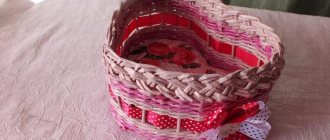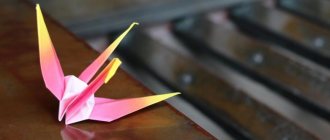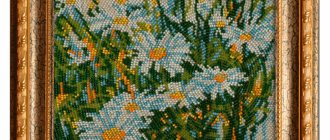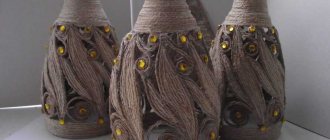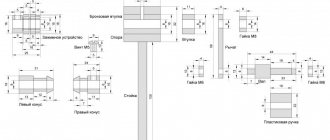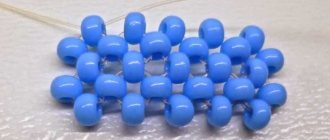Articles
All photos from the article
If you used wood for finishing, then to give the interior a finished look you will need to use additional elements to cover the joints and abutments. Naturally, it is best to use additional products made of the same material as the main covering; if, for example, you use a plastic ceiling plinth to look like wood, then the appearance of the finished result will leave the best.
In the photo: products can have very different configurations, but we recommend choosing simpler options if you do not have experience in making skirting boards
Varieties
Before we move on to analyzing the question of how to properly make a plinth, let's look at all the most commonly used variations.
There is simply no point in loading your head with absolutely all technologies, so we will consider only the most effective ones.
So, there is a small list of varieties:
The classic option is a plinth made of solid wood. As for the price of this product, everything is simple, it all depends only on the type of wood and the level of its processing.
Such items can be found in the catalog of some elite goods, or in the average price niche.
The main and most commonly used option is natural plinth made from inexpensive wood. These are, as a rule, coniferous tree varieties.
In some designs, the main element is laminated veneer lumber. After the plinth is formed, more expensive types of wood are glued onto it. The result is a product that is very similar to an expensive design.
Before installing skirting boards, you need to make a final choice.
Recommendation! If you are interested in the question of how to make a ceiling plinth, look for additional information on the Internet. In general, the process of installing ceiling skirting boards is quite different from installing conventional ones.
Components
Fasteners and screws for installing skirting boards
Connecting or transition elements are designed to create a continuous contour and connect the planks in straight sections. If there is wiring, it goes through them easily.
Other details to achieve a harmonious floor frame:
- external and internal corners to insert lamellas at right angles at the junction of walls; the corner can be assembled at an angle of 45 or 135°; corresponding elements are produced for this;
- plugs can be installed in the area where curbs adjoin the door casing or in other blind places.
Mounting brackets can be placed on the wall to allow the baseboard floor frame to be dismantled if necessary.
How to make a corner correctly
In order to learn how to make a corner on the baseboard, just read the information below.
So, in order to make the corners on the plinth as smooth and correct as possible, you just need to buy a special device called a corner element.
In the modern world, a corner element can be selected for absolutely any connection option. If you are interested in how to make a corner on a plinth without a miter box, turn to the Internet for help.
Equipment required for work
To make a plinth with your own hands, you need to have a certain set of tools; we will consider those devices with the help of which the process is carried out as quickly and efficiently as possible:
| A circular saw | Needed to cut the board into pieces of the required size. In our case, a compact option is also suitable, since the average thickness of the processed materials is approximately 50 mm. It is important to purchase a high-quality saw blade so that it does the job well and does not leave burrs on the ends; it is better to choose the option with a medium or fine tooth; it cuts slower but cleaner |
| Jointer | Used to make surfaces smooth, it will take just a few minutes to process the board and you will get a perfectly smooth surface. We recommend paying attention to combined options that combine a circular saw with a jointer; the price of such solutions is much lower than purchasing two separate devices |
| Milling machine | We can say that this is the main equipment, without which it is impossible to make a plinth, like many other products. On sale you can find inexpensive models for home use that can help in solving any problems that arise during the construction and repair process. |
| Wood cutters | The router itself is useless unless you have cutting elements of a certain configuration. They are sold in specialized stores and differ both in appearance and in quality. If you want to achieve an excellent result, it is better to choose more expensive options; they provide high quality work and are much more durable than the budget segment |
Important! In addition to the equipment, you need to take care of the room where it will be located. There should be high-quality lighting, the area should be sufficient, and the temperature should not fall below 15 degrees so that the wood does not deform.
Circular saw with jointer - a universal multifunctional device
What are skirting boards made of?
There is a list of the most popular materials from which skirting boards are usually made:
Pine is the most popular material for making skirting boards not only among coniferous woods, but among all timber in general.
It is very convenient and pleasant to make anything from this material; it is very soft, easy to cut and process. The pleasant color allows you to add some original solutions.
Larch is a less popular material, but is also used quite often. The cost of manufacturing from such material is relatively high, but skirting boards made from this material, as a rule, are not at all afraid of moisture.
Moreover, this material does not rot, which means that it will last for a very long time. Skirting boards made from this material are great for kitchens or bathrooms.
Oak is usually the most valuable and elite material. Skirting boards made from this material can usually boast of their high level of strength and durability.
Moreover, oak skirting boards will add some success and solidity to your interior.
The last material we will consider is beech. Another high-class material.
In terms of its performance, it is on par with oak, but has a more original pinkish tint, if it is not subjected to additional processing.
Making stucco using casting
To make a plinth with your own hands you will need the following tool:
- silicone mold for casting;
- a special box for the mold, designed to protect it from deformation, can also be made of gypsum;
- bucket;
- mixer for mixing gypsum mortar;
- brush;
- steel spatula, take the size based on the width of the mold;
- a rubber spatula, a spatula is perfect for sealing tile joints;
- trapezoidal construction knife;
- 100 grit sanding sponge.
Photo: mold and box for making gypsum cornice
From the material we need:
- gypsum;
- PVA glue;
- finishing putty;
- laundry soap;
- materials for reinforcement, suitable: tow, threads, copper or aluminum wire, long sawdust. The ideal option would be to use a fiberglass façade mesh;
- soap;
- water.
To make ceiling plinths with your own hands, you need to follow the following steps.
Instructions:
- place the silicone mold in a plaster box and strengthen it;
- make a soap solution, cut the soap into small pieces and pour warm water, proportion 1 to 5, mix thoroughly, the result should be a thin porridge. Additionally, filter it through a fine sieve;
- Using a brush, apply the soap solution in a thin and even layer to the mold;
- fill the bucket with water, the amount of water should be equal to the volume of the mold;
- add PVA glue to the water, about 200 grams of glue per 5 liters of water, stir thoroughly at low speed for 1 minute. After this, without stopping stirring, we slowly begin to pour in the gypsum itself; the solution should have the consistency of liquid sour cream. In proportions, approximately 1 part of water requires 1.4 parts of gypsum;
- let the prepared solution stand for 10 minutes;
- pour three quarters of the solution into the mold and lightly shake its edges, this is done so that the remaining air comes out;
Pouring gypsum mortar into a mold
- Apply reinforcing material to the surface of the solution, lightly press it into the solution, add the remaining gypsum, shake the edges again, tighten the surface with a spatula;
Reinforcement of the product with tow
- After the plaster dries a little and acquires a matte color, you need to tighten the surface again with a spatula and make notches. The notches are needed to strengthen the connection of the product with the base when installing the plinth.
At this point the filling stage can be considered complete. After about 20 minutes, the product can already be removed from the mold.
To do this, the mold with the finished product is turned over onto a flat surface - upside down. The form itself must be removed from the middle to the edges of the baseboard .
Removing the silicone mold from the product
That's all, we made the plinth with our own hands, all we have to do is wait for it to dry. The finished product acquires a white color and, when tapped, produces a characteristic ringing sound.
Note! If there are defects on the product, they must be repaired with finishing putty using a rubber spatula and sanded with an emery sponge.
Advice! The pouring process must be done quickly; if the solution begins to harden, it can be thrown away. Don't try to add water and stir it. After hardening, such gypsum loses its qualities and becomes brittle.
Conclusion
Drawing a line over all of the above, it becomes clear that in skirting boards everything depends eighty percent on the type of wood.
If you are interested in how to make a plinth on the ceiling, check out the additional information, as everything is completely different there. We wish you good luck!
Determining the quantity of materials
According to the instructions, the plinth is placed not only around the perimeter of the room, it must be placed in niches under the radiator, arched openings, and placed on door slopes. Therefore, the perimeter is initially calculated, then the indicated areas are measured and all values are added up. To account for cutting, the resulting value is multiplied by a factor of 1.1.
Fasteners are counted at intervals of 0.5 m, and the number of external and external corners is counted. For a direct joint, two elements are provided per small room, the number of plugs near the door frames and in other places is determined.
Photos of skirting boards
Apartment. 2-room in a new panel building › Do-it-yourself high white plinth
Well, now we’ve had a rest and it’s time to get down to business again. It's time to take care of the baseboards. Skirting boards are, of course, a small thing, but you can't do without them; they make the interior more harmonious and complete. Nowadays, high painted baseboards are increasingly becoming a trend, so we wanted the same
What we wanted
Having monitored the market, disappointing points emerged: firstly, such a plinth is difficult to buy, and secondly, its price per meter depends on the height and starts from 400 rubles. In my opinion, this is very expensive for such a seemingly simple thing, so we decided to experiment - make it ourselves
It may seem crazy to someone to make a plinth themselves, but on the other hand, it’s just a board of the required height and width, and a decorative element. The inspiration was these pictures from the web:
Well, it’s really nothing complicated?! Let's try...
...And we tried it almost 2 years ago, when we were doing renovations in the nursery, we were satisfied with the result, so we already knew how to implement this in the kitchen, we’ll tell you too))
We're going to the construction market
To make a high plinth, as mentioned above, you need boards and corners. We will only surround the visible parts of the wall with plinths (we are so lazy, or economical), our “perimeter” was 7.5 meters, in total we get:
- Boards 24x120x2000 - 4 pieces, you need to choose carefully, because they are not all perfectly even and smooth;
- Corner decorative rail 20x20x2200 – 4 pcs;
- White acrylic enamel;
- Brush;
- Self-tapping screws;
- Concealed nails
- Plastic dowels;
- Saw for miter box
- Miter box, Sasha decided to please himself and bought the most expensive model;
- Wood putty;
- Skin;
Installation
The next day, when the paint was dry, we began installation.
First we decided where the joints would be. Because Our wall is 4.2 meters long, and the boards are 2 meters long, so we decided to make a solid board in the center of the wall, and 1.1 meters on each side of the board.
Next are the corners. In the children's room we simply butted the corners end to end, but here we decided to cut at 45 degrees. Well…
I really, really regretted this - either the saw felt dull, or the board was very thick, in general it took 15-20 minutes to make one cut. But he did! It’s good that we only have 2 corners))
Fitting to the wall
Sasha attached the boards with self-tapping screws: he marked where to cut 4-5 points on the board, then drilled thin guide holes. Having placed the board against the wall, I marked the holes on the wall through the holes in the board. I drilled holes in the wall with a hammer drill, hammered in dowels and screwed the boards to the wall.
Hole for dowel
Because of the unevenness in the corner, the board did not want to fit against the wall; I had to trim the board a little along the contour of the unevenness. There's still a gap left, but it's okay, we'll fill it up.
Hewn plinth to match the wall relief
The gap is almost invisible
fasten it to the main wall directly with self-tapping screws without dowels
When Sasha finished, I puttyed all the cracks, irregularities and screw heads, and then sanded off the excess and irregularities. Now it was the turn of the corners, we attached them to the finishing nails.
The corner is nailed to the board, you cannot nail it to the floor!
To avoid damaging the corner with a hammer, a long bolt was used.
In the corner I washed it down at 45 0, and this yellow one is putty
I forgot to paint this piece
Apartment. 2-room in a new panel building › Do-it-yourself high white plinth
Well, now we’ve had a rest and it’s time to get down to business again. It's time to take care of the baseboards. Skirting boards are, of course, a small thing, but you can't do without them; they make the interior more harmonious and complete. Nowadays, high painted baseboards are increasingly becoming a trend, so we wanted the same
What we wanted
Having monitored the market, disappointing points emerged: firstly, such a plinth is difficult to buy, and secondly, its price per meter depends on the height and starts from 400 rubles. In my opinion, this is very expensive for such a seemingly simple thing, so we decided to experiment - make it ourselves
It may seem crazy to someone to make a plinth themselves, but on the other hand, it’s just a board of the required height and width, and a decorative element. The inspiration was these pictures from the web:
Well, it’s really nothing complicated?! Let's try...
...And we tried it almost 2 years ago, when we were doing renovations in the nursery, we were satisfied with the result, so we already knew how to implement this in the kitchen, we’ll tell you too))
We're going to the construction market
To make a high plinth, as mentioned above, you need boards and corners. We will only surround the visible parts of the wall with plinths (we are so lazy, or economical), our “perimeter” was 7.5 meters, in total we get:
- Boards 24x120x2000 - 4 pieces, you need to choose carefully, because they are not all perfectly even and smooth;
- Corner decorative rail 20x20x2200 – 4 pcs;
- White acrylic enamel;
- Brush;
- Self-tapping screws;
- Concealed nails
- Plastic dowels;
- Saw for miter box
- Miter box, Sasha decided to please himself and bought the most expensive model;
- Wood putty;
- Skin;

